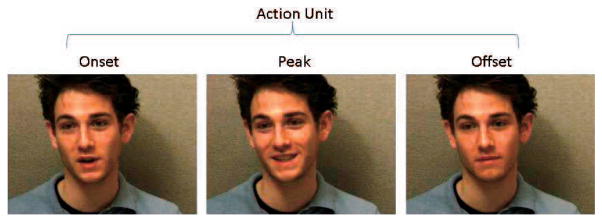Fig. 2.
FACS coding typically involves frame-by-frame inspection of the video, paying close attention to transient cues such as wrinkles, bulges, and furrows to determine which facial action units have occurred and their intensity. Full labeling requires marking onset, peak, and offset and may include annotating changes in intensity as well. Left to right, evolution of an AU 12 (involved in smiling), from onset, peak, to offset.

